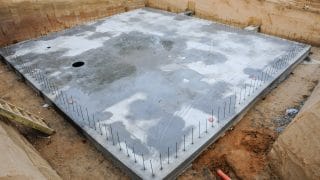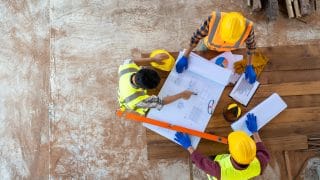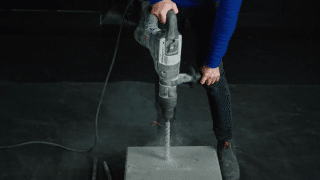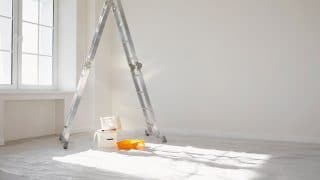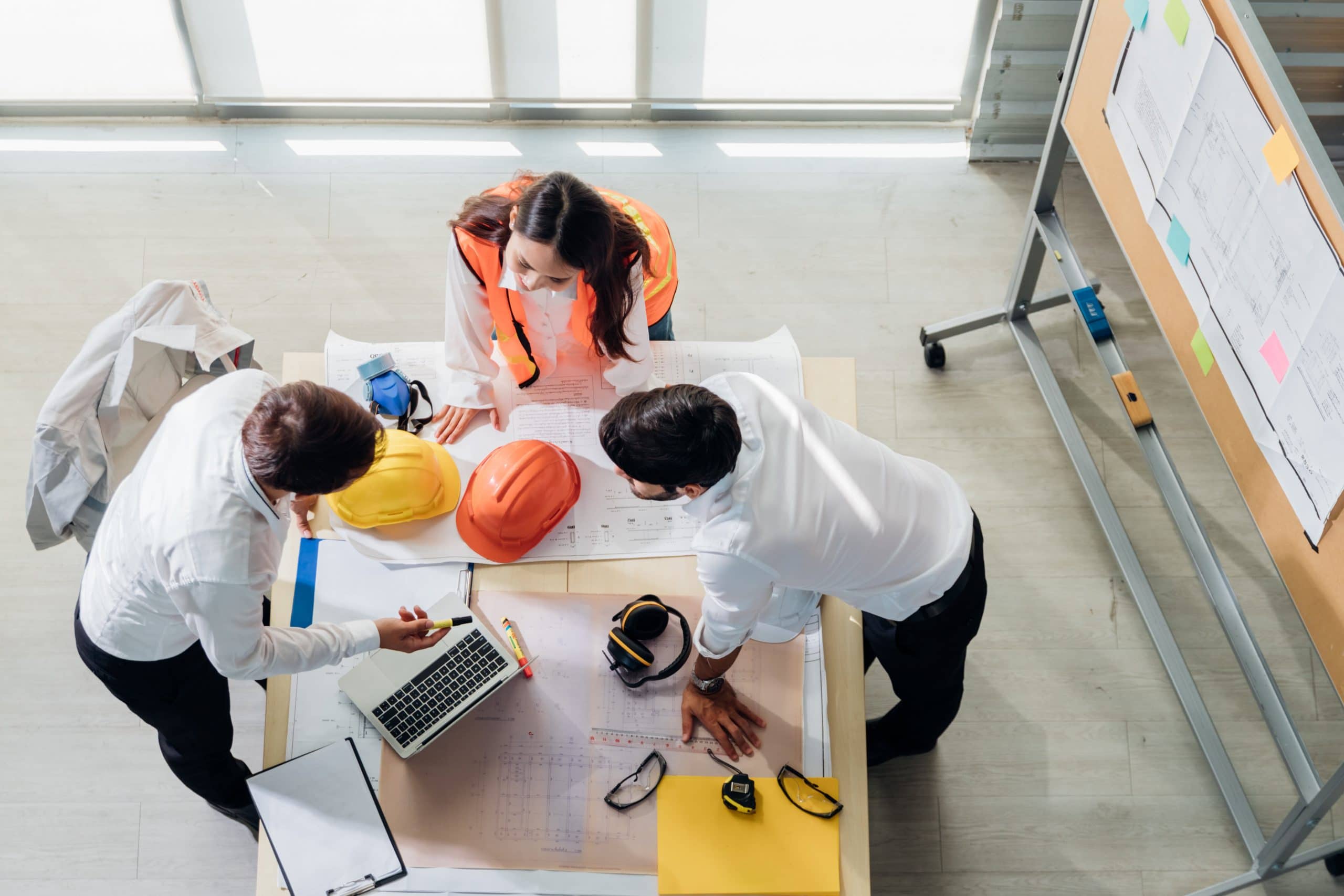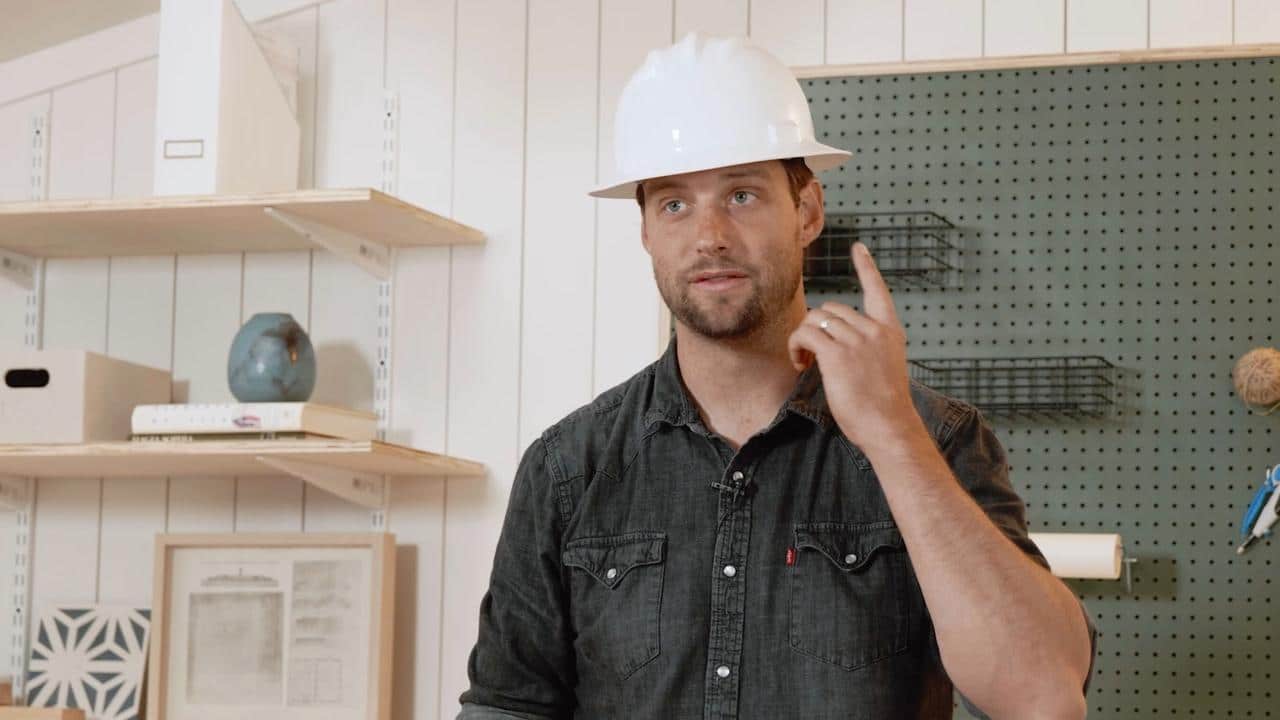
The Occupational Health and Safety Administration (OSHA) recommends Personal Protective Equipment (PPE) in construction for your eyes and face, feet, head, hands, and hearing. Different trades will require PPE beyond the basics, such as heat-safe shields and gloves for welding, harness gear for fall protection when working at heights, or specialty respirator filters to prevent exposure to chemicals.
Whether you are working in a niche trade or doing general construction, all construction workers should always have these PPE basics on hand—you’re never going to regret wearing it.
Potential hazards on a construction site
The potential hazards on a construction site are vast and will vary depending on the job type. This isn’t meant to alarm you—the more you know about hazards, the better you can prepare. Most often the solution is simple. The right clothing like safety glasses, boots, a hard hat, and a few different types of gloves and respirator filters will help keep you safe from hazards. Here are some of the most common hazards on construction sites and the PPE that can help protect you from them:
- Electrical hazards: Gloves and eye protection
- Falls: Harness gear & head protection
- Exposure to chemicals: Respirator & gloves
- Heat hazards: Specialized clothing & gloves
- Struck-by: Hard hat & boots
- Airborne hazards: Hard hat & safety glasses
- Intense lighting: Specialized eye protection
- Rolling or pinching objects: Heavy duty gloves & boots
- Sharp objects: Hard hat, anti-puncture boots, and leather gloves
Essential personal protective equipment every builder needs
One of the most common issues that can prevent you from wearing your safety gear is poorly fitting or uncomfortable gear. When you shop, try everything on to make sure you can move around comfortably and that each piece of gear is properly fitting. Your gear should fit relatively snugly so that you have greater dexterity and to avoid it from catching on objects.
Eye protection
Safety glasses are absolutely essential for any builder doing any type of work—and regular glasses or sunglasses are not going to cut it. Make sure your safety glasses have a z87 marking on the inside arms—that shows that they’re rated to stop airborne objects. Note: Safety glasses also come tinted for when you are doing work where you need a little tint but do not need a full face shield.
If you wear prescription glasses, you have three options for your eye protection:
- Wear your contacts, and wear standard safety glasses.
- Wear your prescription glasses, and wear the larger safety glasses style meant to fit over prescription glasses or sunglasses.
- Order a pair of prescription safety glasses. These keep debris from getting behind contacts, and you don’t have to wear two pairs of glasses at a time.
Hearing protection
The two main types of hearing protection are ear plugs and ear muffs. To ensure that your ear plugs are inserted correctly, reach around your head with the hand opposite your ear and pull your ear back while you insert. This will help the plug settle in deeper and you will get the actual protection rating the plugs are designed to give you.
- Foam ear plugs: Inexpensive, good protection and you can still hear others while wearing them, but they collect wax which attracts dirt and are therefore harder to clean.
- Polymer ear plugs: Same benefits as foam ear plugs but easier to keep clean.
- Ear muffs: Acoustic foam, effectiveness depends on seal over your ear, best for chainsaws and heavy equipment, have to remove to hear others speak.
Head protection
Wear a hard hat when you are working on any site with the potential for falling objects or fixed objects that you could run into at head level. Those doing steel work, framing, or heavy fabrication or construction should wear a hard hat every single day. If you’re working in trim carpentry, you’re not going to need to wear one every day, but you should have one on hand for times when other teams on site will be moving things overhead in your work area.
The Occupational Health and Safety Administration (OSHA) recommends Personal Protective Equipment (PPE) in construction for your eyes and face, feet, head, hands, and hearing. Different trades will require PPE beyond the basics, such as heat-safe shields and gloves for welding, harness gear for fall protection when working at heights, or specialty respirator filters to prevent exposure to chemicals.
Whether you are working in a niche trade or doing general construction, all construction workers should always have these PPE basics on hand—you’re never going to regret wearing it.
Potential hazards on a construction site
The potential hazards on a construction site are vast and will vary depending on the job type. This isn’t meant to alarm you—the more you know about hazards, the better you can prepare. Most often the solution is simple. The right clothing like safety glasses, boots, a hard hat, and a few different types of gloves and respirator filters will help keep you safe from hazards. Here are some of the most common hazards on construction sites and the PPE that can help protect you from them:
- Electrical hazards: Gloves and eye protection
- Falls: Harness gear & head protection
- Exposure to chemicals: Respirator & gloves
- Heat hazards: Specialized clothing & gloves
- Struck-by: Hard hat & boots
- Airborne hazards: Hard hat & safety glasses
- Intense lighting: Specialized eye protection
- Rolling or pinching objects: Heavy duty gloves & boots
- Sharp objects: Hard hat, anti-puncture boots, and leather gloves
Essential personal protective equipment every builder needs
One of the most common issues that can prevent you from wearing your safety gear is poorly fitting or uncomfortable gear. When you shop, try everything on to make sure you can move around comfortably and that each piece of gear is properly fitting. Your gear should fit relatively snugly so that you have greater dexterity and to avoid it from catching on objects.
Eye protection
Safety glasses are absolutely essential for any builder doing any type of work—and regular glasses or sunglasses are not going to cut it. Make sure your safety glasses have a z87 marking on the inside arms—that shows that they’re rated to stop airborne objects. Note: Safety glasses also come tinted for when you are doing work where you need a little tint but do not need a full face shield.
If you wear prescription glasses, you have three options for your eye protection:
- Wear your contacts, and wear standard safety glasses.
- Wear your prescription glasses, and wear the larger safety glasses style meant to fit over prescription glasses or sunglasses.
- Order a pair of prescription safety glasses. These keep debris from getting behind contacts, and you don’t have to wear two pairs of glasses at a time.
Hearing protection
The two main types of hearing protection are ear plugs and ear muffs. To ensure that your ear plugs are inserted correctly, reach around your head with the hand opposite your ear and pull your ear back while you insert. This will help the plug settle in deeper and you will get the actual protection rating the plugs are designed to give you.
- Foam ear plugs: Inexpensive, good protection and you can still hear others while wearing them, but they collect wax which attracts dirt and are therefore harder to clean.
- Polymer ear plugs: Same benefits as foam ear plugs but easier to keep clean.
- Ear muffs: Acoustic foam, effectiveness depends on seal over your ear, best for chainsaws and heavy equipment, have to remove to hear others speak.
Head protection
Wear a hard hat when you are working on any site with the potential for falling objects or fixed objects that you could run into at head level. Those doing steel work, framing, or heavy fabrication or construction should wear a hard hat every single day. If you’re working in trim carpentry, you’re not going to need to wear one every day, but you should have one on hand for times when other teams on site will be moving things overhead in your work area.
Note: If you notice any cracks or dents, or if you take a hard hit on your hard hat, replace it—even if you don’t see any visible damage.
Hand protection
Professional builder Jordan Smith recommends having “a glove for every occasion.” You might not need to wear gloves everyday, but it’s good to be prepared for any type of construction work you may be doing on any given day. Here are some of the most common “occasions” and their suitable glove type:
- Leather: Good for metalwork, heat exposure (won’t melt or stick), but you will get less tactile feedback.
- Canvas: Good for general carpentry or when you want a lighter glove with more tactile feedback, but not cut resistant or heat resistant.
- Cut resistant: Good for metalwork and especially meal roofing, grippy, cut resistant on both sides, and available with different cut ratings.
- Insulated gloves: Good for electrical work, protect your hands from heat and shock.
Respiratory protection
Another crucial piece of safety equipment to have on hand is a respirator. An N95 mask keeps out dust and other particulates, which is good enough for demolition. But when you are using adhesives, spray foams, or working with any product high in volatile organic compounds, you will need to wear a respirator. Always read the product to learn the correct filter cartridge and buy a respirator where you can swap out different filters.
N95 respirators have the added benefit of protecting you from COVID-19 and other airborne viruses on the job site.
Other PPE and safety supplies
- First aid kit: In the construction industry, even if you are wearing protective equipment it is common to get non-emergency cuts. Keep a simple first aid kit in your toolbag with first aid basics like a variety of bandages, anesthetics, tweezers, and latex gloves.
- Foot protection: Some PPE you will wear on occasion, but you will wear your boots every single day. Purchase a comfortable, non-slip, puncture-resistant heavy duty boot with a reinforced toe for maximum protection.
- High visibility clothing: Bright neon or reflective clothing is essential for working at night, in dark indoor environments, and around any traffic.
The best thing you can do for your safety is be consistent with wearing your PPE, every single time. Also, if you are doing a task you’ve never done before, ask your foreman what PPE you will need and refer to the complete OSHA guide for more information on occupational safety.
MT Copeland offers video-based online classes that give you a foundation in construction fundamentals with real-world applications. Classes include professionally produced videos taught by practicing craftspeople, and supplementary downloads like quizzes, blueprints, and other materials to help you master the skills.



